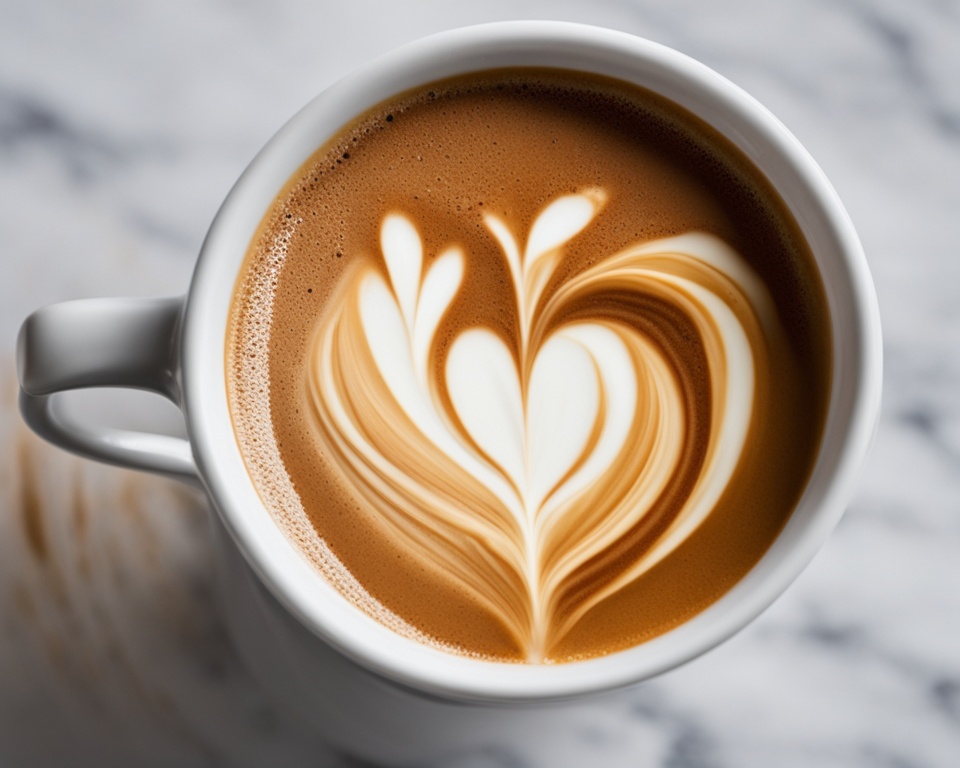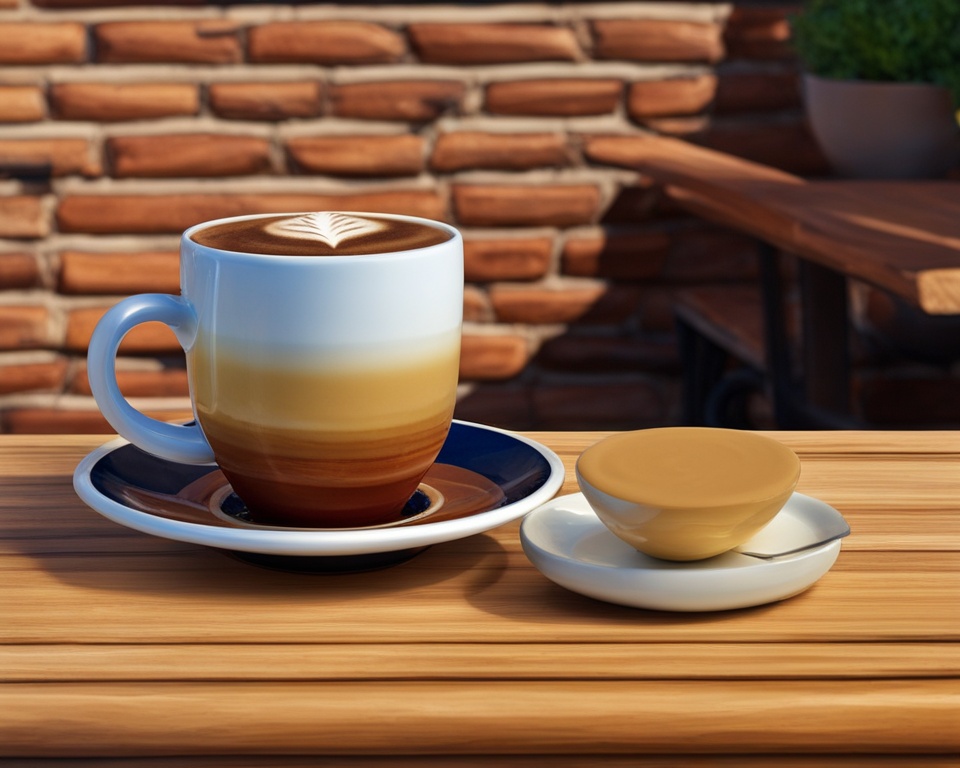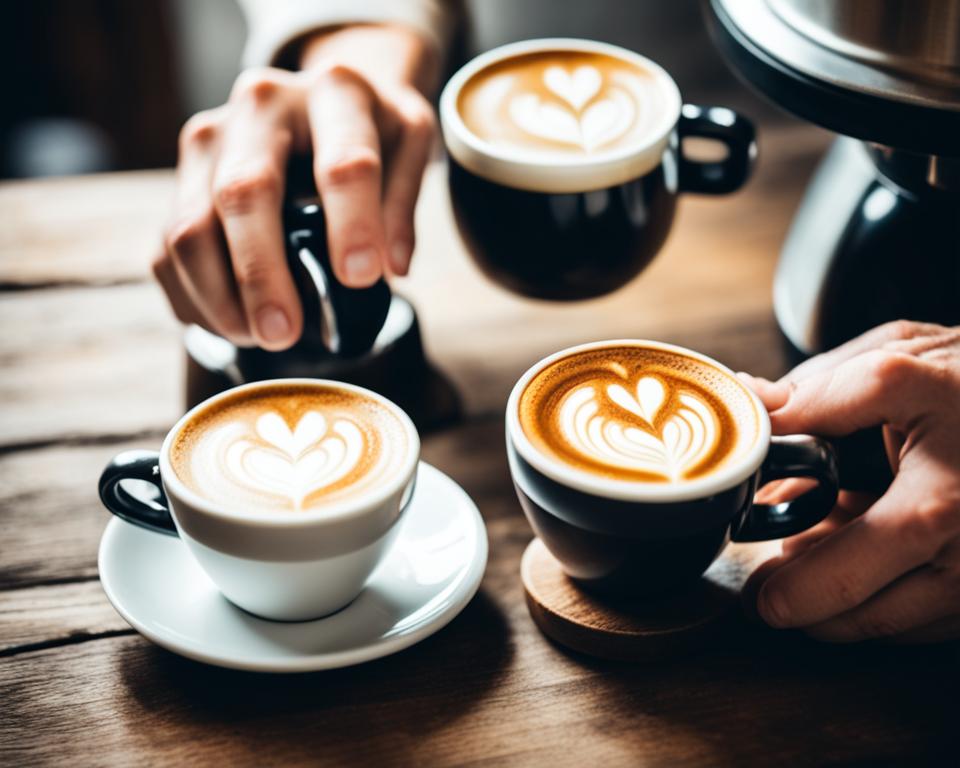Every morning, I find myself standing in line at my favorite coffee shop, cradling the thought of that perfect cup of espresso. A flat white or a cappuccino feels like choosing between two delightful friends, each with their own unique charm.
The aroma of freshly ground espresso wafts through the air, and I can’t help but reflect on the beauty of coffee culture that brings us coffee aficionados together.
Espresso drinks are more than just a morning ritual—they’re a part of our daily lives, connecting us through shared experiences and personal preferences.
As I take that first sip, I’m reminded of the endless conversations and debates over which drink truly reigns supreme.
Is it the velvety texture of a flat white or the frothy elegance of a cappuccino?
Join me as we explore these popular coffee options, delving into the depths of each drink to uncover their merits and discover what makes them stand out in the American coffee market.
With so many choices at our fingertips, let’s embark on a journey to find that perfect cup together. Whether you’re a flat white devotee or a cappuccino connoisseur, there’s a world of espresso drinks waiting to be savored.
Understanding What a Flat White Is
The flat white coffee has been a favorite among coffee aficionados, drawing attention from Australian coffee and New Zealand coffee enthusiasts alike.
But what makes a flat white so special? Let’s delve deeper to understand its origin, ingredients, preparation, and taste.

Origin and History
The origins of flat white coffee have sparked a friendly rivalry between Australia and New Zealand. Both nations claim to have invented this beloved espresso with milk.
While New Zealanders point to Auckland in the early 1980s, Australians argue that Sydney’s coffee shops popularized it soon after.
Regardless of its true birthplace, the flat white remains a staple in the coffee culture of both countries.
Ingredients and Preparation
Flat white coffee typically consists of a double shot of espresso mixed with microfoam milk. The preparation involves a precise balance:
- Start with a fresh double shot of espresso.
- Steam milk to create a silky, velvety microfoam.
- Pour the steamed milk over the espresso, ensuring a smooth, layered finish.
The key is achieving the right texture, which elevates the espresso with milk into a unique and delicious experience.
Taste and Texture
I love how the flat white coffee combines a strong coffee flavor with a creamy texture. The microfoam milk creates a velvety mouthfeel that enhances the rich espresso.
It’s a perfect balance that’s neither too milky nor too bitter. The flat white’s smooth, inviting profile makes it a popular choice for those who appreciate a robust yet mellow coffee drink.
Exploring the Cappuccino

When we talk about an Italian cappuccino, we delve into a rich tradition that dates back to the early 20th century.
What sets a traditional cappuccino apart is not just its history but also its unique composition and preparation techniques.
Origin and History
Italy is the birthplace of the traditional espresso beverage known as cappuccino, which is beloved there for its exquisitely balanced flavour.
Italian cappuccinos originated in Viennese coffee shops and got their name from the Capuchin friars, who were named after them because of their brown robes.
Ingredients and Preparation
A traditional cappuccino is a meticulously crafted beverage composed of equal parts espresso, steamed milk, and frothy milk.
The preparation involves first making a solid shot of espresso, then adding steamed milk, and finally topping it with a layer of perfectly frothed milk.
Taste and Texture
The real charm lies in the frothy coffee texture and the rich, aromatic flavor that captivates your senses. The foam on top acts as a natural insulator, keeping the coffee warmer for longer while offering a creamy sensation with every sip.
Often, a sprinkle of cocoa or cinnamon on top enhances the overall experience, making it a beloved choice among coffee lovers.
Flat White vs Cappuccino
When it comes to choosing between a flat white and a cappuccino, it’s easy to see why some people might have a tough time deciding.
Both delicious options stem from an espresso base and include milk in their preparation.
Similarities between Flat White and Cappuccino:
The most obvious similarity between these two drinks is their espresso base. Both coffee options start with a rich shot of espresso, which forms the foundation of the drink.
Additionally, they are both milk-based coffee beverages, which contribute to their creamy and smooth textures.
It’s this combination of espresso and milk that gives each drink its unique appeal.
Key Differences to Note
Despite their similarities, some key differences set them apart. One major difference is the milk texture. The flat white features microfoam milk, resulting in a velvety texture, while cappuccinos boast a thicker, frothier milk foam.
This difference in milk texture also influences the strength of the coffee flavor. The flat white tends to have a more robust espresso flavor, whereas the cappuccino offers a balanced blend of milk and coffee.
Presentation also varies, with cappuccinos often topped with a sprinkle of chocolate or cinnamon.
Choosing Based on Flavor Preferences
So, how do you decide which one to pick? It all comes down to personal preference. If you prefer a stronger coffee taste with a silky texture, the flat white might be your ideal coffee drink choice.
On the other hand, if you enjoy a balanced coffee and milk flavor with a fluffy froth on top, a cappuccino could be the perfect option.
Ultimately, both drinks are delicious, allowing you to enjoy an amazing milk-based coffee experience no matter your choice.
The Rise of Specialty Coffee Shops
Third-wave coffee shops have exploded across America, bringing a new level of appreciation for artisanal coffee.
Have you ever walked into a coffee shop and marveled at the precision and care the baristas pour into each cup? That’s the essence of third-wave coffee.
Every time I visit one of these specialty coffee shops, I am stunned by the barista craft on display.
From the selection of high-quality beans to the meticulous preparation of specialty espresso drinks, it’s clear these baristas treat coffee making as an art form. They’re not just serving coffee; they’re creating an experience.
I remember my first encounter with a flat white at a local third-wave coffee shop. The aroma hit me first—rich and inviting.
Watching the barista expertly steam the milk and pour it over the espresso was mesmerizing. The result was a creamy, velvety drink that made me appreciate the skill and dedication behind each cup.
These third-wave coffee shops also play a significant role in popularizing drinks like the flat white and cappuccino.
By focusing on the barista craft and using superior ingredients, they elevate these specialty espresso drinks to new heights.
Whether you’re a connoisseur or just someone who loves a great cup of coffee, these shops offer something special.
Have you noticed how these places emphasize the quality of each cup? It’s not uncommon to find detailed descriptions of the coffee’s origin, tasting notes, and even the farm where the beans were grown.
This transparency fosters a deeper connection between you and the coffee you’re drinking. And let’s be honest, it makes the whole experience feel a lot more personal and enjoyable.
So next time you find yourself in a third-wave coffee shop, take a moment to savor the artisanal coffee and the incredible barista craft that goes into making it.
Trust me, you’ll appreciate your specialty espresso drinks even more.
Health Considerations
When it comes to choosing between a flat white and a cappuccino, understanding the health implications is key for those of us trying to be mindful of our coffee nutrition. Let’s dive into the details.
Nutritional Differences
Both drinks have their own unique nutritional profiles. A traditional flat white typically contains more milk than a cappuccino, which directly affects the caloric content of coffee.
Flat whites usually have a smoother texture with a creamier consistency due to the microfoam milk, which can slightly increase the caloric intake for those who enjoy this espresso drink.
Caffeine Content
When considering caffeine intake, both the flat white and the cappuccino start with a base of espresso. However, the amount of milk added to each drink can influence the caffeine concentration.
Generally, a flat white has a higher concentration of espresso, thus a bit more caffeine than a typical cappuccino.
This difference is essential for coffee aficionados who monitor their daily caffeine intake.
Serving Size and Calorie Count
Serving size plays a significant role in the caloric content of coffee. Typically, a flat white’s serving size ranges from 6 to 8 ounces, while cappuccinos commonly come in at 5 to 6 ounces.
As a result, the caloric intake can vary. A standard flat white might contain around 120 calories, depending on the milk used, while a cappuccino might come in slightly lower due to its frothy consistency.
For those making health-conscious coffee choices, opting for low-fat or dairy-free milk alternatives can reduce overall calorie count. It’s also beneficial to keep an eye on portion sizes to manage caloric intake better.
Which Espresso Drink Pairs Best with Ristretto?
When exploring the rich flavors of coffee, a ristretto or espresso comparison can be intriguing. Ristretto, with its concentrated sweetness and bold notes, pairs perfectly with a creamy cappuccino. The frothy milk complements the intensity, creating a balanced experience that enhances the unique qualities of both drinks.
Conclusion
Throughout this coffee journey, we’ve explored every nuanced aspect of both flat whites and cappuccinos.
From their rich histories to the precise crafting techniques that make each drink unique, it’s clear that both have dedicated fan bases among coffee enthusiasts.
The question of which is the best espresso drink may never have a definitive answer, as personalization in taste plays a pivotal role.
Whether you prefer the velvety, strong flavor of a flat white or the light, frothy essence of a cappuccino, the choice ultimately comes down to your unique preferences.
Remember, an informed coffee decision enhances your appreciation of every cup. It’s not just about the drink; it’s about the experience and the joy it brings to your day.
So, why not experiment a little? Try both drinks at your local coffee shops, savoring the subtle differences and finding your favorite.
In this ever-evolving coffee culture, one thing binds us all—our shared passion for a great cup of coffee. Here’s to your personal coffee journey, filled with new discoveries and enjoying every sip!
FAQ
What are the main differences between a flat white and a cappuccino?
The primary difference lies in the milk texture and foam. A flat white has microfoam milk with a velvety texture, while a cappuccino has a thick layer of frothy milk. Additionally, flat whites have a stronger coffee flavor compared to the lighter, more balanced taste of cappuccinos.
Where did flat white originate?
The origin of the flat white is debated, with both Australia and New Zealand claiming to have invented it. Both countries have a rich coffee culture and have popularized this espresso drink internationally.
How do I prepare a flat white at home?
To make a flat white, you’ll need a double shot of espresso and microfoam milk. Start by brewing a double shot of espresso. Then, steam the milk to create a velvety microfoam and pour it over the espresso, ensuring there’s no large foam on top.
What makes a cappuccino unique?
The cappuccino stands out due to its equal parts of espresso, steamed milk, and milk foam. Its light, airy texture and balanced coffee flavor, often finished with a sprinkle of chocolate or cinnamon, are iconic of this classic Italian espresso drink.
Are there nutritional differences between flat whites and cappuccinos?
Yes, there are some nutritional differences. Generally, a flat white, often made with whole milk, can have more calories compared to a cappuccino, which uses less milk and more foam. However, the exact nutritional content depends on the milk type and serving size.
How does the caffeine content compare between these two drinks?
Both drinks are based on espresso, so the caffeine content is fairly similar. However, serving sizes can influence caffeine levels. A standard flat white with a double shot of espresso has more caffeine compared to a cappuccino with a single shot.
Why are specialty coffee shops important to the popularity of these drinks?
Specialty coffee shops, particularly those associated with the third-wave coffee movement, emphasize high-quality coffee and skilled preparation. These shops have played a significant role in popularizing drinks like the flat white and cappuccino, often showcasing the craftsmanship of baristas.




